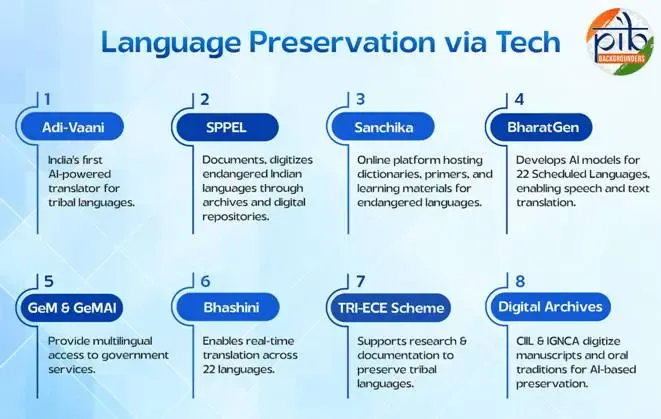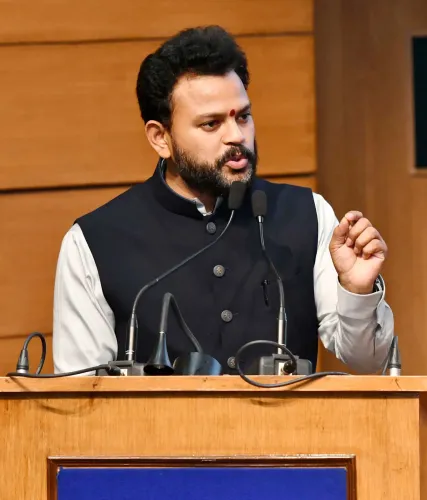Is Bhashini, BharatGen, and Adi-Vaani Positioning India as a Global Leader in Multilingual Innovation?

Synopsis
Key Takeaways
- India is leveraging technology to preserve its diverse linguistic heritage.
- Bhashini and BharatGen are key platforms for multilingual support.
- Adi-Vaani focuses on digitalizing tribal languages.
- SPPEL documents endangered languages in India.
- Innovative schemes promote linguistic inclusion and cultural diversity.
New Delhi, Oct 25 (NationPress) India is on the path to becoming a global frontrunner in multilingual innovation, thanks to platforms like Bhashini, BharatGen, and Adi-Vaani, as announced by the government on Saturday.
The nation boasts one of the most diverse linguistic landscapes globally, featuring 22 Scheduled Languages alongside numerous tribal and regional dialects spoken throughout its expansive territory.
To safeguard its rich linguistic legacy, the government is harnessing advanced technologies such as Artificial Intelligence (AI), Natural Language Processing (NLP), machine learning, and speech recognition to develop intelligent, scalable language solutions.
Key platforms fostering linguistic inclusion include Bhashini and BharatGen, which provide multilingual support, while Adi-Vaani seeks to digitalize tribal languages.
“The future of India’s language preservation is driven by cutting-edge technology, integrating AI and digital archives to keep its rich linguistic heritage alive and accessible. Platforms like Bhashini, BharatGen, and Adi-Vaani, along with initiatives like SPPEL and TRI-ECE, empower citizens nationwide to engage with services in their native languages,” the government stated.
“This holistic approach not only protects India’s cultural diversity but also fosters inclusive digital growth, positioning the nation as a global leader in multilingual innovation,” it further noted.
SPPEL, or the Scheme for Protection and Preservation of Endangered Languages, concentrates on documenting and digitally archiving endangered Indian languages, especially those spoken by less than 10,000 individuals.
The Tribal Research, Information, Education, Communication, and Events (TRI-ECE) scheme backs innovative research and documentation projects that aim to preserve tribal languages and cultures.
These programs facilitate seamless communication, real-time translation, voice-enabled interfaces, and localized content delivery.
“By establishing a comprehensive technological ecosystem that honors linguistic diversity, India is laying down a foundation for an inclusive digital future where every citizen, irrespective of their mother tongue, can fully participate in the digital economy and governance,” the statement concluded.









